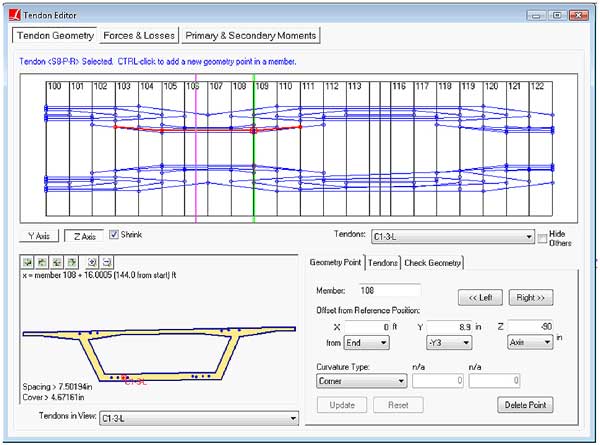4D BRIDGE SERIES - Features
Tendon Geometry
LARSA 4D's new Tendon Composer Tool simplifies the entry of the geometry of pre-stressed and post-tensioned tendons.
The path of tendons between control points are modelled as straight lines or second/third-order curves through the 3D geometry of the bridge model. Tendons are presented in both 2D view form all planes and a 3D view that is updated in real time so that tendon geometry can be visually verified. Additionally, the girder or beam elements that the tendons pass through are displayed with their actual shapes and dimensions to verify cover distance and tendon spacing.

As the users defines tendon geometry, LARSA 4D reports immediately:
Cover and spacing between tendons
Anchor set and friction losses
Elongation due to jacking
Short-Term Losses
Short-term stress losses due to wobble and curvature friction and anchorage slip are immediately calculated while entering tendon geometry.
Long-Term Losses
Long-term stress losses include relaxation, elastic shortening, and losses due to creep, shrinkage, and superimposed loads. Custom relaxation curves can be entered by the user. Long-term losses are computed during the Staged Construction Analysis and results are marked with load classes to support code-based load combinations.

